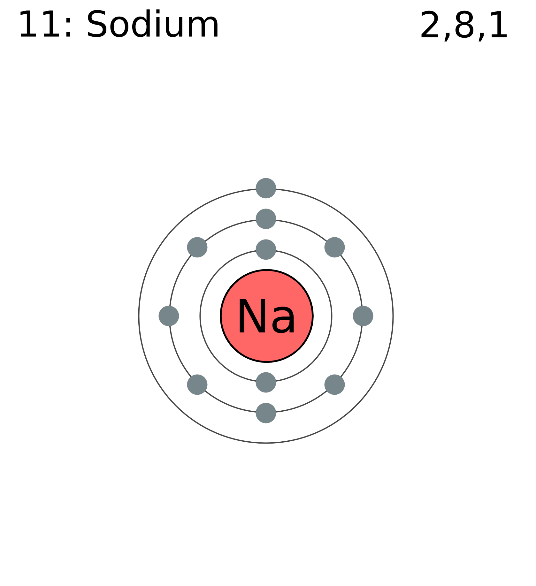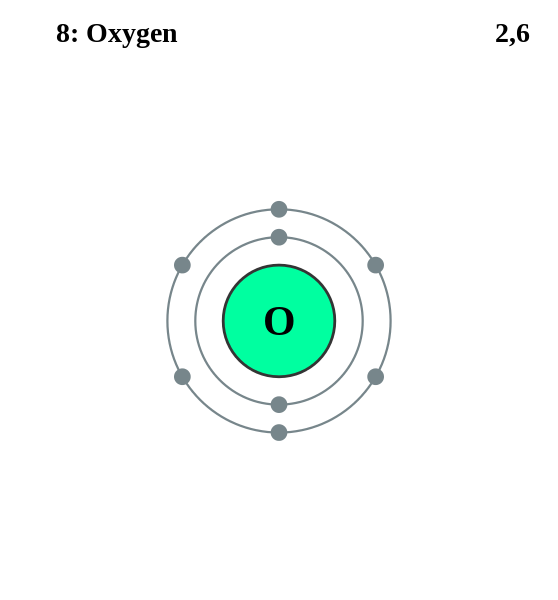
Draw electron dot structure of Sodium (Na), Oxygen (O).
Answer
480k+ views
Hint: The valence electrons of an atom are represented by Lewis symbols (also known as Lewis dot diagrams or electron dot diagrams). Lewis structures (also called Lewis dot structures or electron dot structures) are diagrams that show how the valence electrons of atoms in a molecule are represented. The valence electrons of atoms and molecules, whether they exist as lone pairs or inside bonds, may be visualized using these Lewis symbols and Lewis structures.
Complete answer:
A positively charged nucleus and negatively charged electrons make up an atom. The electrical force between them maintains electrons ‘bound' to the nucleus, allowing them to remain within a fixed distance. According to careful research, not all electrons in an atom have the same average position or energy. The electrons are said to ‘reside' in various principal energy levels, which exist at various radii from the nucleus and have rules about how many electrons they can accommodate.
To write the Lewis symbol for an atom, you must first figure out how many valence electrons the element has. The periodic table's layout can assist you in determining this information. Because we know that an element's chemical reactivity is determined by the number of valence electrons, the table lists the elements in order of valence electrons.
Here Sodium has 11 electrons so, it can be depicted as

Here Oxygen has 8 electrons so, it can be depicted as

Note:
In order to achieve greater stability or a lower energy state, atoms gain, lose, or share electrons in their valence level. Bonds between atoms develop in this way, resulting in the bound atoms being in a lower energy state than when they were alone. Atoms achieve this more stable state by having a valence level that can hold as many electrons as possible. The most stable arrangement for the first principal energy level is two electrons, whereas for all other levels outside of the first, eight electrons are required to achieve the most stable state.
Complete answer:
A positively charged nucleus and negatively charged electrons make up an atom. The electrical force between them maintains electrons ‘bound' to the nucleus, allowing them to remain within a fixed distance. According to careful research, not all electrons in an atom have the same average position or energy. The electrons are said to ‘reside' in various principal energy levels, which exist at various radii from the nucleus and have rules about how many electrons they can accommodate.
To write the Lewis symbol for an atom, you must first figure out how many valence electrons the element has. The periodic table's layout can assist you in determining this information. Because we know that an element's chemical reactivity is determined by the number of valence electrons, the table lists the elements in order of valence electrons.
Here Sodium has 11 electrons so, it can be depicted as

Here Oxygen has 8 electrons so, it can be depicted as

Note:
In order to achieve greater stability or a lower energy state, atoms gain, lose, or share electrons in their valence level. Bonds between atoms develop in this way, resulting in the bound atoms being in a lower energy state than when they were alone. Atoms achieve this more stable state by having a valence level that can hold as many electrons as possible. The most stable arrangement for the first principal energy level is two electrons, whereas for all other levels outside of the first, eight electrons are required to achieve the most stable state.
Recently Updated Pages
Master Class 12 Business Studies: Engaging Questions & Answers for Success

Master Class 12 Economics: Engaging Questions & Answers for Success

Master Class 12 English: Engaging Questions & Answers for Success

Master Class 12 Maths: Engaging Questions & Answers for Success

Master Class 12 Social Science: Engaging Questions & Answers for Success

Master Class 12 Chemistry: Engaging Questions & Answers for Success

Trending doubts
December 10th of 1948 is an important day in the history class 12 sst CBSE

Prove that a parallelogram circumscribing a circle-class-12-maths-CBSE

Dihybrid cross is made between RRYY yellow round seed class 12 biology CBSE

The correct structure of ethylenediaminetetraacetic class 12 chemistry CBSE

What is the Full Form of PVC, PET, HDPE, LDPE, PP and PS ?

The first microscope was invented by A Leeuwenhoek class 12 biology CBSE




